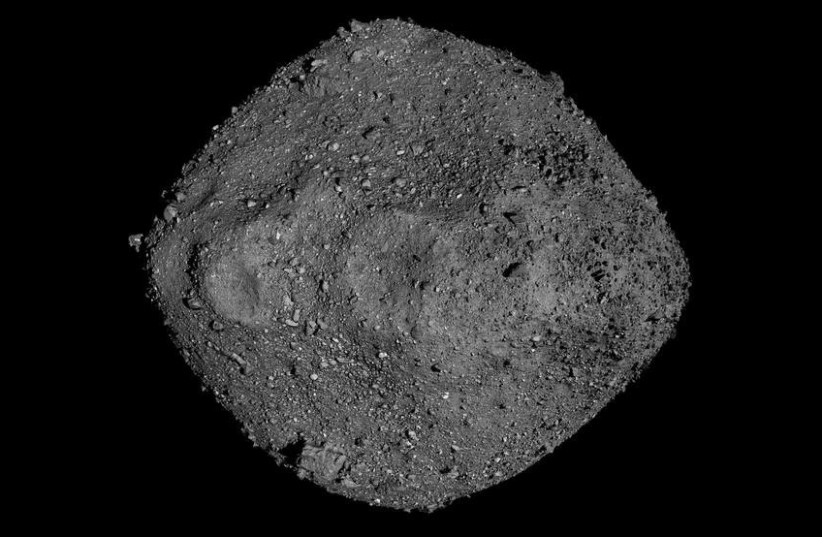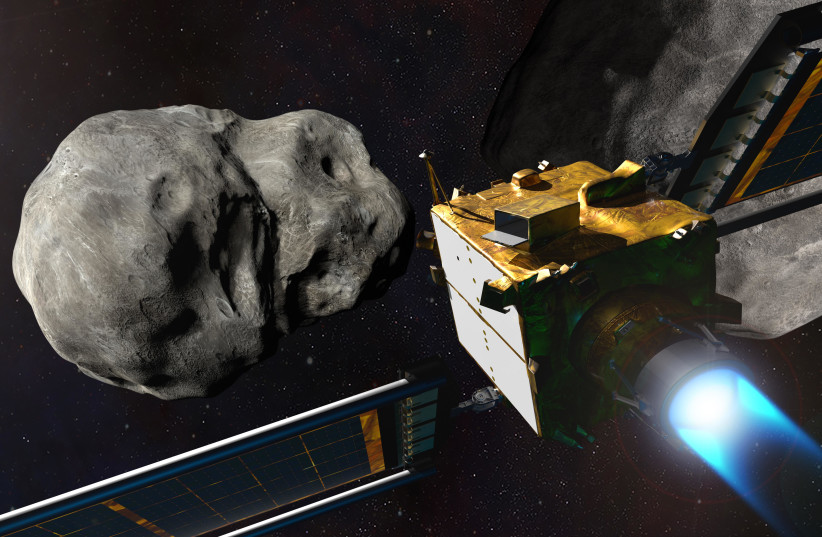Three small asteroids are set to barrel toward Earth this Tuesday, according to NASA's asteroid tracker.
The asteroids in question have been designated 2022 WA6, 2022 WV8 and 2022 WF8, according to the Center for Near-Earth Object Studies (CNEOS) at NASA's Jet Propulsion Laboratory (JPL).
How big is the asteroid coming toward Earth in 2022?
NASA's estimates have concluded that each of these asteroids is on the small side and the Earth is in no danger.
For example, the first asteroid coming in, 2022 WA6, is between 17 meters to 37 meters in diameter.

For context, the Lincoln Memorial in Washington is just 30 meters tall. But this monument size isn't exactly monumental on the grand scale of things.
The next one, asteroid 2022 WV8, is bigger, ranging between 22 meters and 49 meters in diameter.
After that is a far smaller one, asteroid 2022 WF8, which is just 9.5 meters to 21 meters in diameter.
The latter two asteroids are both dwarfed in speed by asteroid 2022 WA6, which is flying at a speed of around 13.86 kilometers per second, or 49,896 kilometers per hour.
Will an asteroid hit Earth in 2022?
None of these asteroids has any chance of hitting the Earth. To illustrate, the closest asteroid of the batch, 2022 WA6, will fly at around 1.67 kilometers away from the Earth.
Meanwhile, the Moon on average orbits the Earth at around 384,000 kilometers, so this isn't even close.
What would happen if the asteroid actually hit the Earth?
According to research from the Davidson Institute of Science, the educational arm of Israel's Weizmann Institute of Science, an asteroid 140 meters in diameter or more would release an amount of energy at least a thousand times greater than that released by the first atomic bomb if it impacted Earth.
An even larger asteroid that's over 300 meters wide – like the Apophis asteroid – could destroy an entire continent. An asteroid over a kilometer in width – like asteroid 138971 (2001 CB21), which passed the Earth in early March 2022 – could trigger a worldwide cataclysm.
None of these asteroids would have caused serious destruction if any, should they impact the Earth, and they would likely burn up or explode in the atmosphere.
But as for the question of whether an asteroid will ever hit the Earth in 2022, the answer is yes. Or rather, it already happened twice.
Back in March 2022, a small asteroid around half the size of a giraffe known as 2022 EB5 hit the Earth just hours after its discovery. But given how small it was, it didn't exactly result in any damage.
More recently, in late November 2022, tiny asteroid 2022 WJ1 harmlessly exploded into fragments that scattered around Lake Ontario. NASA had predicted that this small meter-long asteroid would impact at this location and new there wouldn't be any harm from it.
When is the next asteroid predicted to hit the Earth?
Not for a very, very long time. NASA has checked the numbers, and according to them, the Earth is safe from any catastrophic asteroid impacts for the next century, meaning no asteroid-induced Armageddon is on its way.

Which asteroid could potentially hit Earth?
Scientists don't know for sure, but there are a few candidates for the most dangerous asteroid for the planet.
One of the most dangerous asteroids at the time of writing is Bennu, a gigantic 500-meter-wide asteroid that has an orbit that can cross with Earth's own.
If this asteroid impacted the Earth, the result would be catastrophic - but as far as NASA is aware, this won't be for a long time, if ever.

Do we have any way to stop an asteroid from hitting the Earth?
We just might, thanks to the hard work of scientists around the world.
The field of planetary defense is specifically organized to find ways of keeping the Earth safe from asteroids and scientists at NASA and across the globe are hard at work trying to do just that.
Most notably, this has involved pioneering the exciting technique of asteroid deflection, which uses kinetic energy through vehicular collision to ever so slightly change an asteroid's orbital path, meaning it would, in theory, no longer be set to crash into Earth but instead fly past it.
In layman's terms, NASA decided to make a spacecraft punch an asteroid to make it move out of the way.
In fact, that is exactly what recently happened in September in NASA's landmark Double Asteroid Redirection Test (DART) Mission, which tested out this theory on a faraway asteroid Dimorphous in the Didymous system.
And according to the results, the DART Mission was a success, managing to alter the asteroid's orbit.
